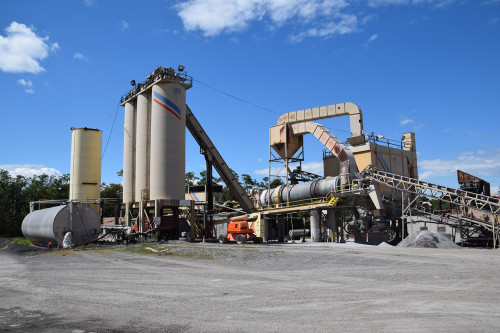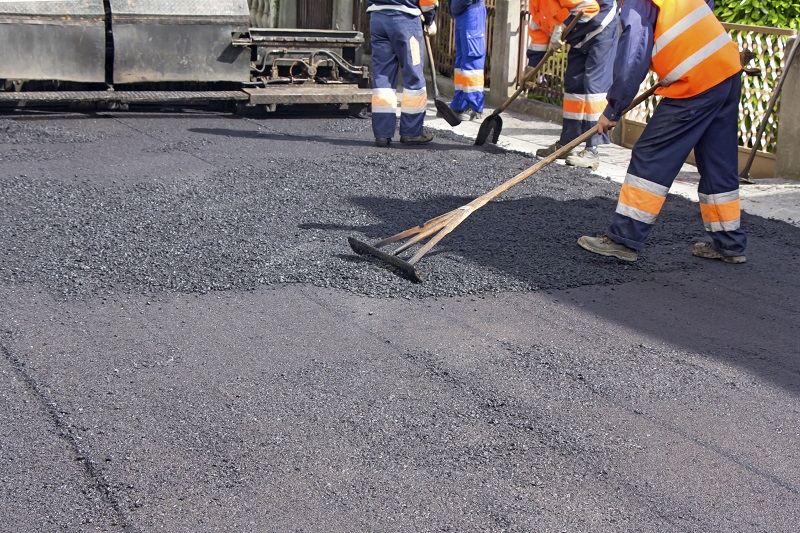Unlocking the Tricks of Hot Mix Asphalt Innovation
Discovering the depths of hot mix asphalt technology uncovers a world where precise formulations and meticulous procedures converge to shape our roadways and framework. The combination of binders, aggregates, and fillers isn't just a building and construction job however a tactical orchestration of resilience and efficiency. As we peer right into the complex dance of elements, a tapestry of resilience and sustainability unravels. However what lies beneath this surface area of asphaltic mastery, and what secrets wait to be introduced in the realm of paving technologies?
Significance of Hot Mix Asphalt
Hot Mix Asphalt plays a vital duty in modern-day framework growth due to its resilience and cost-effectiveness. As the most typically utilized paving material for roads, freeways, and parking lots, Warm Mix Asphalt supplies an array of advantages that add to its value in building jobs.
The sturdiness of Hot Mix Asphalt stems from its make-up, which includes accumulations, binder, and filler products that are very carefully selected and blended to meet details performance needs. Generally, the importance of Warm Mix Asphalt in infrastructure growth can not be underrated, as it continues to be a foundation of modern building practices.
Parts of Asphalt Mixes
The composition of asphalt mixes is composed of thoroughly picked aggregates, binder, and filler products that are vital for attaining particular efficiency requirements. Aggregates are the key element of asphalt mixes, giving strength and stability. These accumulations can be natural, such as gravel or smashed rock, or synthetic, like recycled materials from old pavements. The binder, commonly bitumen or asphalt cement, holds the accumulations with each other and offers versatility and durability to the mix. The selection of the binder is vital as it straight affects the mix's efficiency in different weather. Fillers, such as moisturized lime or Rose city concrete, are used to improve the mix's workability and aging resistance. Angled Parking.
The mix and percentage of these parts play a considerable function in figuring out the top quality and efficiency of the asphalt mix. Engineers thoroughly design the mix to meet specific needs, taking into consideration variables like website traffic quantity, climate conditions, and pavement life-span. Appropriate choice and balancing of accumulations, binder, and fillers are crucial for developing long lasting, resilient asphalt pavements.
Mixing and Manufacturing Methods

When the accumulations are chosen, the binder, usually asphalt concrete, is included to bind the products with each other. The binder's top quality and amount substantially affect the mix's toughness, resistance, and adaptability to environmental elements. Additionally, fillers like moisturized lime or Rose city cement may be included to boost certain qualities of the asphalt mix, such as its workability or moisture resistance.
Throughout manufacturing, the accumulations and binder are heated up, generally in between 250-325 ° F(121-163 ° C ), to promote mixing and ensure correct finish of the aggregates. The blending procedure must be complete to achieve an uniform blend that promotes the wanted performance characteristics of the asphalt. Different techniques, such as set mixing or drum blending, are employed to attain high-grade and constant asphalt blends for building projects.
Aspects Affecting Asphalt Efficiency
Factors affecting asphalt efficiency encompass a range of variables that influence the toughness, longevity, and general quality of asphalt pavements. One vital element is the top quality of materials utilized in the asphalt mix. The kind and source of accumulations, the binder top quality, and the additives all play a substantial role in figuring out the efficiency of the asphalt pavement. The rank of aggregates is critical as it affects the mix's resistance, workability, and security to rutting and breaking.

Environmental conditions additionally influence asphalt efficiency. Temperature level variations, wetness seepage, and traffic tons can all influence the structural integrity of the sidewalk. Layout considerations, such as sidewalk density and drainage, are vital in making certain the long-term performance of the asphalt sidewalk. By meticulously considering these professionals, designers and variables can maximize asphalt performance and enhance the life span of pavements.
Sustainable Practices in Asphalt Innovation

WMA enables for the manufacturing and placement of asphalt blends at reduced temperatures compared to traditional hot-mix asphalt, resulting in minimized power consumption he said and greenhouse gas you could try this out discharges. The use of porous asphalt blends can aid mitigate stormwater overflow concerns by permitting water to infiltrate with the sidewalk and right into the ground, advertising natural water filtering and charge procedures.
Verdict
Finally, hot mix asphalt technology plays a vital duty in modern-day framework growth as a result of its durability and cost-effectiveness. By thoroughly balancing elements, utilizing appropriate mixing methods, and thinking about various factors, engineers can develop high-grade asphalt blends that hold up against hefty web traffic loads and harsh weather problems. Accepting sustainable practices, such as making use of recycled products and warm-mix innovations, better boosts the environmental friendliness of asphalt modern technology.
Mixing and production strategies in warm mix asphalt innovation involve the specific mix and processing of accumulations, binder, and fillers to produce a high-performance and sturdy asphalt mix.Aspects influencing asphalt efficiency include a range of variables that influence the sturdiness, longevity, and general high quality of asphalt sidewalks. Lasting methods in asphalt technology include various campaigns aimed at lowering the environmental influence of asphalt production and paving procedures. By incorporating recovered asphalt pavement (RAP) and recycled asphalt shingles (RAS) right into new asphalt blends, the sector can significantly lower the usage of raw products and energy, while likewise decreasing garbage dump waste.
WMA permits for the production and placement of asphalt blends at lower temperatures contrasted to traditional hot-mix asphalt, resulting in decreased power consumption and greenhouse gas discharges.